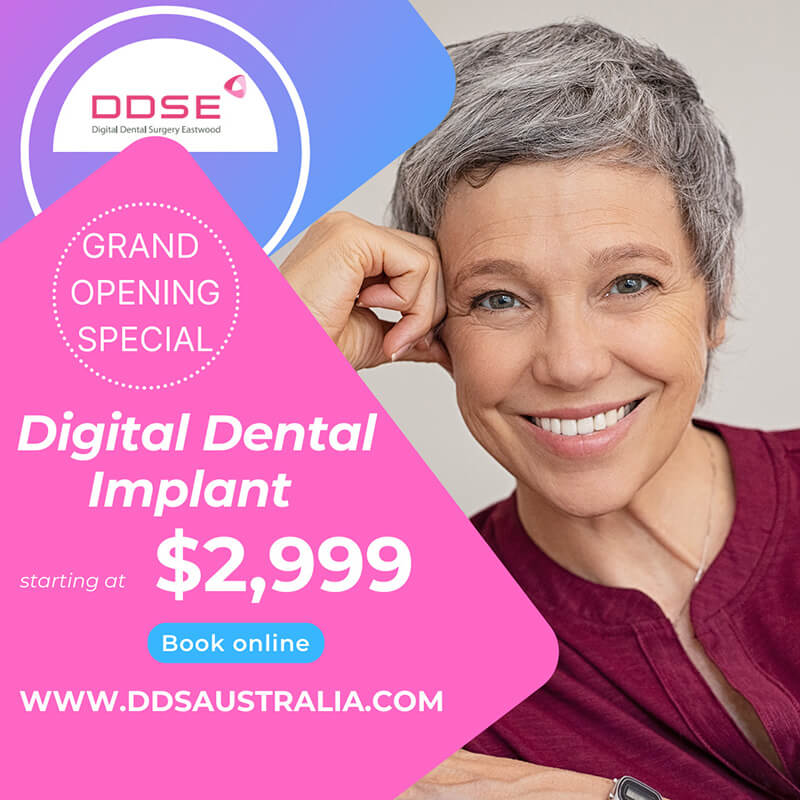When it comes to the question of a tooth implant vs bridge, which is the better option? After all, they both do the job of replacing a missing tooth right? Unfortunately, many patients don’t have all the information they need to make an informed dental decision. So, what’s it to be? A bridge or an implant? Let’s take a closer look.
Before we get into the nitty gritty of which the best option for you, let’s get back to basics. First of all, what is a tooth bridge?
In essence, a tooth bridge is a form of missing teeth replacement that consists of a framework which supports one or more prosthetic teeth or crowns. The idea is that the framework is supported by your healthy teeth situated either side of the gap and the prosthetic crown or crowns sit in or ‘bridge’ the gap, thus making up a complete smile.
Okay, all well and good so far, but what is a tooth implant and how does it differ?
Otherwise known as a dental implant, or an implant-based restoration, it consists of a titanium screw or rod which is anchored or secured down into the jawbone where the tooth gap is. After a period of time, any remaining bone tissue merges with the implant to create a super-strong platform. It’s on this platform that the permanent crown is attached.
As you can see, the end results are the same in that both a dental bridge and a tooth implant, have the ability to cover a missing tooth gap. In doing so, they are both capable of restoring the aesthetic quality of a smile. However, that really is as far as the similarities go.
Bridge vs implant difference number 1 – the attachment – Or rather, the lack of it!
As you can imagine, the idea of a tooth bridge is that it spans the gap. This means that the replacement crown that sits in the gap is simply suspended by the supporting framework, rather than being attached into the gap itself.
Conversely, the crown part of the dental implant is permanently attached to the implant itself making for a much stronger functioning tooth.
Difference number 2 – Surgery vs non-surgery
Despite the fact that when fitting a dental bridge, the supporting teeth are filed down to ensure the framework fits, the whole procedure itself is carried out under non-surgical circumstances. This means that a patient can receive a fully-functioning dental bridge in just 2 visits totalling no more than 2-3 hours of work. On the contrary, an implant-based restoration is more complex and requires surgery. That said, it used to be that to fit a dental implant, patients had to endure multiple visits and wait 4-9 months to receive a permanent replacement tooth.

However, with the onset of digital dental implants, much of the hard work (the implant placement) is now pre-planned virtually, without the need for a patient to be there. This means that surgery time and indeed dental visits, are much reduced.
What’s more, a skilled surgeon can fit an implant ‘keyhole style’ in just 15-20 minutes. So, while cutting-edge dental implant restorations are somewhat invasive, they’re no more time consuming than when being fitted with a dental bridge.
Difference number 3 – Standalone vs supported
We already know that a dental bridge relies on the adjacent natural teeth to support the bridging framework, but did you know that in order to do this, the supporting healthy teeth, need to be reshaped to take the bridging framework?
They need to be ground down to accommodate a crown which will in turn support the suspended tooth or teeth. The issue with this form of tooth replacement is that by reshaping an otherwise healthy tooth, that tooth then becomes weaker and, in some instances, it can become compromised at some point in the future. Clearly, this goes against the ethos of dentists looking to preserve and protect a healthy smile.
Alternatively, because a dental implant doesn’t require the support of other natural teeth like a conventional dental bridge would, it becomes a standalone replacement that gets its support from the bone tissue that fuses with the implant.
Difference number 4 – aids bone loss vs halts bone loss
Did you know that when a tooth is missing, it triggers off a string of events that result in more than just a gapped smile? It’s true! When a tooth is lost the bone tissue that once supported the tooth root gets reabsorbed back into the body and is distributed somewhere else. This means that if left, your jaw bone and gum tissue will start to recede. This can result in problematic teeth in the future. Because the bridging crown part of the tooth bridge isn’t attached to the bone tissue, bone shrinkage will continue to occur.

Ultimately therefore, a dental implant has the ability to halt the bone loss process whereas a dental bridge can’t. What’s more because bone loss can make you look older, an implant-based restoration will not only restore your smile, it may prevent that ageing appearance too.
Dental bridge vs dental implant difference number 5 – Initial outlay vs Long-term savings
There’s no beating around the bush. Initially, an implant-based restoration is expensive, costing somewhere between $2000 and $6000 per tooth. Whereas, a patient can have a conventional dental bridge fitted for around $1200 give or take.
If money is your deciding factor, then clearly a dental bridge wins hands down. However, in the long-term, because a dental implant is a permanent structure designed to last many years, it is in fact a cost-effective and hassle-free way or replacing missing teeth. Especially when you consider the fact that a dental bridge may need replacing at least once during that time.
So, there you have it!
When it comes to the conventional bridge vs a dental implant debate, you now have all the facts you need to make an informed dental decision. Whatever procedure you choose, why not come and talk to the team at Digital Dental Surgery Sydney. Our highly skilled team will help you restore your smile using the very latest methods. Call us today on (02) 8294 5812 and discuss your dental dilemmas with us.



